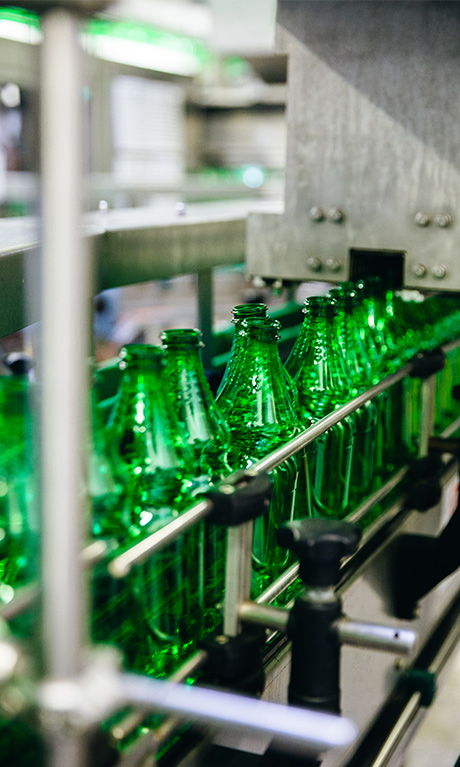When we use a juice base to make vinegar, we add a small amount of alcohol to it right at the beginning. This is why, for example, apple cider is often used as the base for apple vinegar. Once the mash is prepared, the “Submers process” begins.
Vinegar production at Hengstenberg
How is vinegar made? Vinegar production explained in three steps!
Vinegar is an all-round talent that is hard to imagine our everyday life without. Especially not from the kitchen. We have been passionately producing the finest vinegar for over 140 years. We show you step by step how we make our vinegars.

The origin of vinegar
The origin of vinegar dates back over 5000 years. It was produced in clay jugs in which alcoholic beverages, for example wine, were left to rest covered with a cloth. As we know today, the cloth allowed acetic acid bacteria that naturally exist in the air to enter and settle on the wine. Back then, vinegar producers realized that alcoholic beverages become sour if they are left to stand for a long time. This is because acetic acid bacteria convert alcohol and oxygen into acetic acid and water.
People quickly learned to appreciate the properties of vinegar: as a seasoning, a refreshing drink and for preserving meat, vegetables and fish. Vinegar can also be used in a variety of ways in the household.

The purity law for wine vinegars from Hengstenberg
For the production of vinegar, we always follow our own purity law. It was formulated by our company founder Richard Alfred Hengstenberg in 1876 and we still apply it today. This way, we ensure that only high-quality vinegar leaves our warehouse.
The German Beer Purity Law is marketed as a German cultural asset to this day. But what many people do not know: There is not only the purity law for beer production, but also one for the production of vinegar. Because also with vinegar, care in raw materials, recipes and production is the basis for perfect quality.
We at Hengstenberg have set ourselves a goal: to produce vinegars of the highest quality. Richard Alfried Hengstenberg, already adopted this principle. To ensure that vinegars are not diluted or mixed with other low-quality substances and to guarantee best quality, he created Hengstenberg's "Vinegar Law" and thus helped to shape the official German Food Law. Unlike beer, the purity law for vinegar does not restrict the ingredients. Richard Alfried Hengstenberg defined a minimum content of natural wine in wine vinegar:
"High-quality wine vinegars must
contain at least 20% natural wine."
We are still committed to these high-quality standards today. Contrary to beer (where the law was set by the authorities), we have imposed this quality standard on ourselves for vinegar.
The vinegar purity law was the beginning of a philosophy to which we are still committed today: Quality comes first. Based on Richard Alfried Hengstenberg's purity law, we have set more and more quality standards for ourselves over the decades, which we still adhere to today.
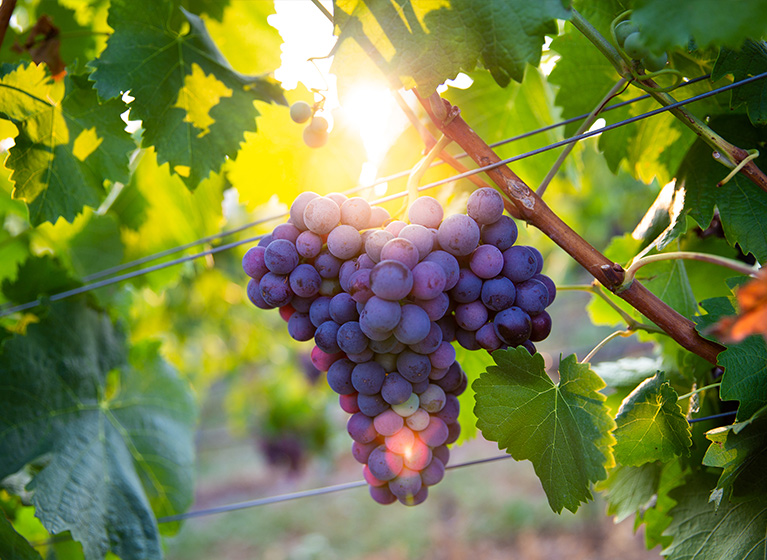
How we make vinegar - the submerged method
There are two ways to make vinegar – from a wine base or from juice. For our vinegars we mainly use a wine base, which we turn into a so-called mash. To do this, we acidify the wine by adding vinegar. The added acetic acid bacteria then float in the mash - this is also called "submerged“. They activate the process in which alcohol turns into acid - which is why a low alcohol content in the mash is very important.

1. Step of the vinegar production: The Acetator
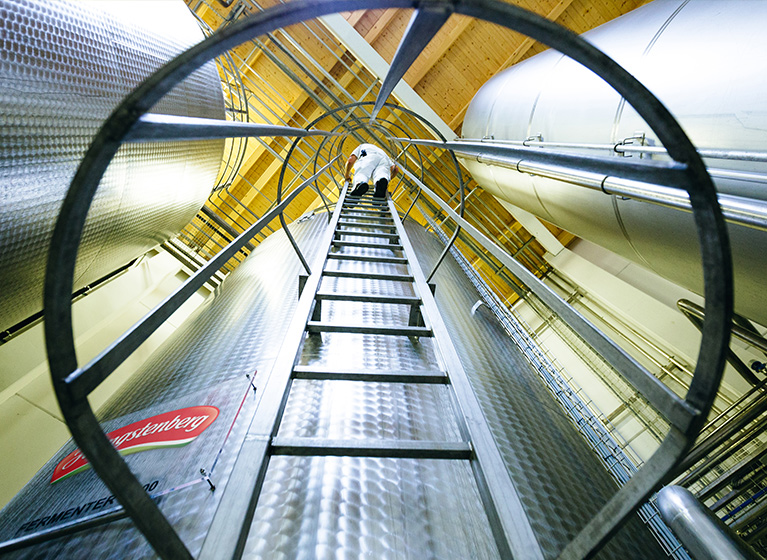
Vinegar is produced from mash in a large tank, the so-called acetator. To do this, we feed the mash into the tank from above. At the bottom of it, a fan and an aerator create small, fine air bubbles - the vinegar bacteria need this oxygen for the conversion process. The temperature in the acetator is also important: at 28 °C, the vinegar bacteria feel particularly comfortable and "hungry". In this "feel-good" environment, the vinegar bacteria transform the alcohol contained in the mash into the desired acid. This happens very quickly - which is why we continuously drain vinegar and fill up the tank with new mash. After this process, there is only a very small amount of alcohol left in the vinegar, which is harmless.

2. Step of vinegar production: refinement, storage and aging
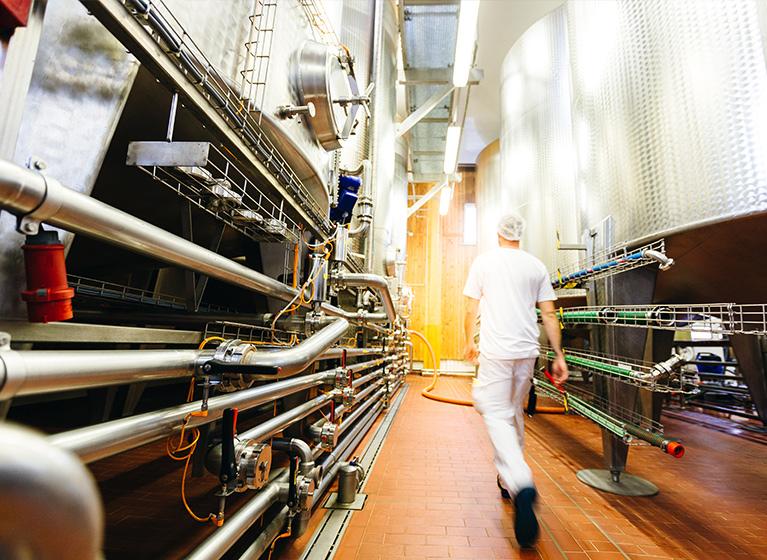
The next step is to refine the vinegar from the acetator. We filter it and add various ingredients such as herbs and spices. We do not use any artificial additives at all. To achieve the optimal acidity of about 5 %, it is sometimes necessary to dilute the vinegar afterwards. Our experienced vinegar masters pay special attention to the acidity of the almost finished vinegar. We then store the vinegar, where it develops its full aroma.

3. Step of vinegar production: bottling and packaging
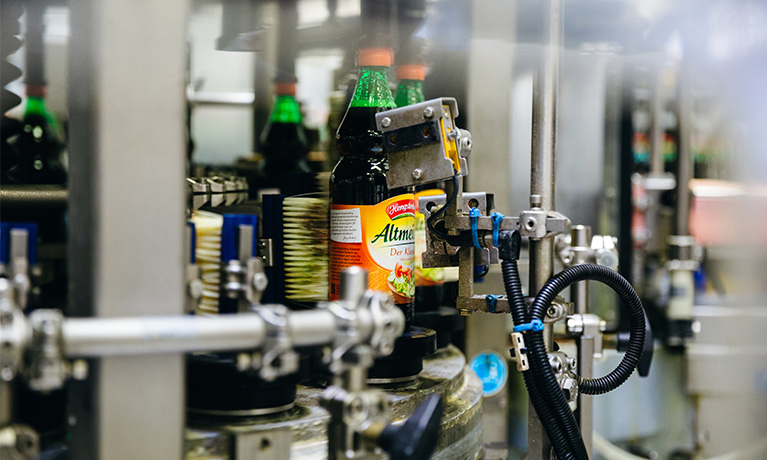

Now the aroma of the vinegar has matured and it’s ready for bottling. We fill it into glass or PET bottles and canisters.
One thing makes our PET bottles very special: They arrive at our warehouse as blanks only 10 cm long. Shortly before bottling we blow them up into finished bottles. This saves us space during transport and means fewer transport routes, which benefits our environment! Furthermore, our PET bottles are 100% recyclable.
Before filling, we check our glass bottles with bright light and a variety of sensors and measuring technology for cracks and inclusions that could affect the stability of the bottle. This way, we prevent glass breakage in our production. Once the bottles are ready, we fill the vinegar, seal the bottle and check the weight.
Finally, we stick labels on our bottles and pack them in small cartons. We stack these on pallets and store them - before they go to the supermarkets.

